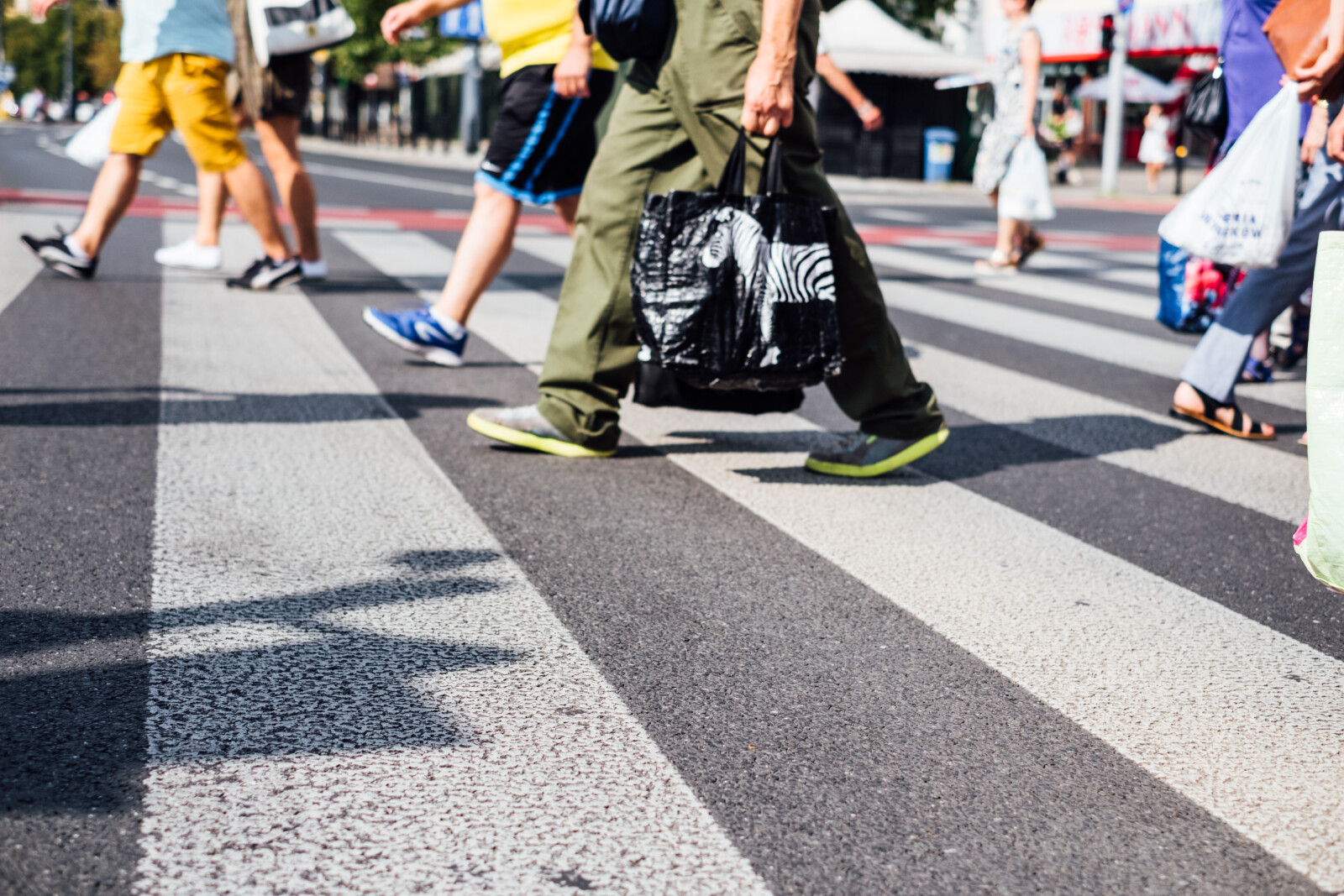Florida Pedestrian Accidents: A Legal Battle Awaits
In Florida, pedestrian accidents are distressingly prevalent, often leading to severe injuries and complex legal battles. This article explores the frequency and causes of these accidents, the impact of Florida's comparative negligence standard, and the critical role of legal representation. With a careful examination of pedestrian laws, traffic controls, and the effects of negligent driving, we offer a comprehensive understanding of pedestrian accidents in Florida and the ensuing legal implications.

Key Takeaways
- Pedestrian accidents happen frequently in Florida, especially at night and in cities.
- Most pedestrian accidents in cities occur on sidewalks, in crosswalks, or on the side of the road.
- Pedestrians must obey official traffic control devices and should not use the roadway if sidewalks are available.
- Drivers often neglect to think about pedestrians and the laws that protect them, leading to accidents.
The Prevalence of Pedestrian Accidents in Florida
A significant number of pedestrian accidents occur frequently in Florida, particularly in urban areas and during night hours, leading to a myriad of serious or even fatal injuries. The economic impact of pedestrian accidents in Florida is substantial, with individuals and families bearing the brunt of medical costs, lost wages, and other financial hardships. Moreover, the broader Florida economy suffers due to lost productivity and increased healthcare expenditures. Strategies to improve pedestrian safety in Florida include expanding public awareness campaigns, enhancing urban planning and infrastructure, and enforcing stricter penalties for traffic violations. By adopting such measures, it is anticipated that pedestrian accidents can be significantly reduced, improving public safety and alleviating the economic burden associated with these incidents.
The Most Common Locations for Pedestrian Accidents in Florida
In Florida, the majority of pedestrian accidents occur in urban areas and during nighttime hours, and understanding these common locations is crucial for implementing effective safety measures. These accidents have significant economic impacts, including medical expenses, loss of productivity, and litigation costs. Furthermore, the human toll extends far beyond these measurable factors, with victims often facing long-term physical and emotional trauma. Infrastructure plays a pivotal role in preventing pedestrian accidents. Effective lighting, well-maintained sidewalks, and clearly marked crosswalks are key elements in ensuring pedestrian safety. Furthermore, specialized infrastructure such as pedestrian overpasses in high traffic areas can drastically reduce the risk of accidents. In order to mitigate the economic impact and improve citizen safety, a committed investment in pedestrian-friendly infrastructure is essential.
The Severity of Injuries in Pedestrian Accidents
Severe trauma and life-altering injuries often result from pedestrian accidents, and the lack of protective armor leaves individuals highly susceptible to the full impact of these collisions. Pedestrian accident statistics reveal a grim reality; the injuries sustained are predominantly severe, often leading to significant disability, or even mortality. Commonly reported injuries include traumatic brain injuries, spinal cord damage, and multiple fractures. These injuries, coupled with the associated long-term medical care, bring forth significant legal implications. Florida's law, which follows the pure comparative negligence standard, allows injured pedestrians to claim damages, even if partially at fault. However, the legal implications of pedestrian injuries are complex and require expert navigation. Therefore, victims are advised to secure qualified legal representation to ensure their rights are protected and adequately compensated for their injuries.
An Overview of Pedestrian Laws in Florida
Understanding the pedestrian laws in Florida is crucial for both drivers and pedestrians, and it can significantly reduce the risk of accidents and injuries. Florida's traffic regulations are designed to protect the rights of pedestrians, imposing stringent penalties on drivers who neglect these laws. The consequences of pedestrian accidents in Florida can be severe, ranging from minor injuries to fatalities. These accidents often result from drivers' failure to yield to pedestrians, particularly at crosswalks, and pedestrian negligence. Florida's laws mandate that if sidewalks are available, pedestrians must use them, and when crossing roadways, they must obey traffic signals. Despite these precautions, accidents occur, underscoring the importance of understanding the laws and the rights of pedestrians in Florida.
The Role of Traffic Control Devices in Pedestrian Safety
The utilization of traffic control devices plays a critical role in pedestrian safety, and their proper adherence can significantly mitigate the risk of accidents on Florida's roads. The effectiveness of these devices in reducing pedestrian accidents is significant. Devices such as traffic lights, pedestrian crossings, and road signs provide clear instructions to both drivers and walkers, thereby lessening the chance of confusion or misjudgment. However, the effectiveness of these devices relies heavily on public education and awareness. Campaigns promoting pedestrian safety are vital in teaching the public about road rules and the importance of respecting traffic control devices. Additionally, they drive home the consequences of non-compliance. Ultimately, a combined approach of effective traffic control devices and comprehensive education campaigns is key in promoting pedestrian safety.
The Proper Use of Roadways and Sidewalks for Pedestrians in Florida
In Florida, adhering to regulations for pedestrians, which include the proper use of roadways and sidewalks, can significantly reduce the risk of accidents, but it also necessitates a clear comprehension of the rules and traffic signals. The importance of pedestrian education cannot be overstated in this context, as it equips individuals with the knowledge they need to navigate safely. A comprehensive understanding of traffic control devices, right-of-way rules, and safe practices at intersections is crucial. Moreover, the role of infrastructure in pedestrian safety is vital. Well-maintained sidewalks, adequately marked crosswalks, and effective traffic calming measures all contribute to a safer environment for pedestrians. Therefore, a synergy of pedestrian education and robust infrastructure is key to enhancing pedestrian safety in Florida.
Understanding the Causes of Pedestrian Accidents
Despite numerous efforts to enhance safety, a significant number of pedestrian accidents in Florida stem from driver negligence and non-compliance with traffic rules, and this concern necessitates deeper exploration to develop effective preventive measures. The primary causes of pedestrian accidents can be attributed to negligent driving, including failure to yield at crosswalks, incomplete stops at stop signs, and impaired driving. Concurrently, pedestrian behavior, such as jaywalking or neglecting traffic signals, contributes to accidents. To mitigate these occurrences, education for both drivers and pedestrians about traffic rules and safety practices is essential. Furthermore, infrastructure improvements such as well-lit crosswalks, pedestrian-friendly road designs, and adequate signage can significantly reduce the risk of accidents, supporting a safer environment for all.
The Impact of Driver Negligence in Pedestrian Accidents
Driver negligence plays a critical role in many Florida pedestrian accidents, often resulting in severe injuries or even fatalities, and it is therefore crucial to understand its impact in order to develop successful prevention strategies. The impact of driver negligence ranges from failure to yield to pedestrians in crosswalks, incomplete stops at signs, to impaired driving. These actions not only endanger lives but also have significant legal consequences. Under Florida's pure comparative negligence law, drivers found negligent can be held financially responsible for the damages proportionate to their fault. Furthermore, a negligent driver may face criminal charges, resulting in penalties such as fines, license suspension, or imprisonment. Thus, driver negligence in pedestrian accidents presents both a perilous public safety issue and a complex legal challenge in Florida.
The Role of Weather and Traffic in Pedestrian Accidents
Weather conditions and traffic congestion significantly influence the number of pedestrian accidents in Florida, often exacerbating the risks faced by individuals navigating through busy roads and intersections. Inclement weather can obscure visibility, making pedestrians less noticeable, thereby heightening the accident rates. High traffic volumes create a chaotic environment that necessitates quick decision-making, sometimes leading to errors and mishaps. The influence of pedestrian behavior on accident rates is also considerable; unforeseen actions can result in deadly repercussions. Concurrently, the role of driver distractions in pedestrian accidents is becoming increasingly significant. Drivers engrossed in their phones or other distractions are less vigilant, triggering accidents. Therefore, both pedestrian behavior and driver distractions, compounded by weather and traffic, contribute to the escalating pedestrian accident rates in Florida.
The Alarming Effects of Drinking and Driving on Pedestrian Safety
An alarming number of pedestrian accidents in Florida are directly attributable to drivers under the influence of alcohol, posing a significant threat to public safety. The correlation between pedestrian accidents and distracted driving, particularly alcohol-impaired driving, is stark. This perilous trend highlights a pivotal issue: drunk driving not only endangers motorists but also compromises pedestrian safety. Moreover, distracted driving exacerbates this hazard, as inattentive drivers struggle to recognize and respond to pedestrians. Public awareness campaigns play a crucial role in reducing pedestrian accidents by educating the populace about the severe consequences of impaired and distracted driving. These campaigns underscore the importance of responsible driving, advocating for pedestrian safety measures, and promoting sober driving. Effective implementation of these campaigns is key to mitigating the risk of pedestrian accidents in Florida.
The Types of Injuries Suffered in Pedestrian Accidents
In pedestrian accidents, victims often end up with severe injuries such as fractures and lacerations, and due to the lack of protective armor, they can also suffer life-altering damages like spinal injuries or paralysis. The prevalence of pedestrian accidents in Florida is distressingly high, particularly in urban areas and during nighttime. The legal implications of pedestrian injuries are significant, involving potential claims for damages and complex liability issues under Florida's pure comparative negligence law. Brain injuries, loss of limbs, and other debilitating conditions frequently result from these accidents, profoundly affecting the lives of victims. It's crucial that both pedestrians and drivers are aware of their responsibilities under law to mitigate this serious public safety issue.
The Concept of Fault and Comparative Negligence in Florida
Understanding the concept of fault and comparative negligence in Florida involves dissecting the circumstances of each accident, and determining the proportionate responsibility of all parties involved. This process, known as fault allocation, is pivotal in pedestrian accident cases. Under Florida's pure comparative negligence framework, even if a pedestrian is deemed partially at fault, they may still claim damages proportionate to the other party's fault. Critical to this is the detailed analysis of the accident scene, witness testimonies, and any available video footage. The legal implications are profound, as the determined fault percentage directly impacts the compensation amount. It highlights the necessity of expert legal assistance to ensure a fair representation of events, ascertain the correct fault allocation, and navigate the complexities of comparative negligence laws in Florida.
The Importance of Legal Representation in Pedestrian Accident Cases
Securing skilled legal representation plays a crucial role in pedestrian accident cases, as it can significantly influence the outcome of the litigation and the compensation received, and it provides invaluable assistance in navigating the complex landscape of Florida's comparative negligence laws. The importance of legal representation in pedestrian accident cases cannot be overstated. Factors contributing to pedestrian accidents in Florida include driver negligence, poor visibility, and non-compliance with traffic regulations. These complexities necessitate the expertise of legal professionals who can decipher the intricate web of laws and regulations. By assessing the accident's circumstances, legal representatives can determine the degree of fault, negotiate fair compensation, and ensure the victim's rights are upheld. As such, legal representation is fundamental in navigating the aftermath of a pedestrian accident in Florida.
Frequently Asked Questions
What Steps Should a Pedestrian Take Immediately Following an Accident in Florida?
Immediately following an accident in Florida, a pedestrian should first prioritize their safety and seek medical care. Even if injuries are not apparent, obtaining medical documentation is crucial, as some injuries may manifest later. Additionally, documenting emotional trauma experienced is important, as it can be factored into claims. It's advisable to report the accident to law enforcement and gather evidence, such as photographs and witness accounts. Finally, they should consult a personal injury attorney.
What Compensation Can a Pedestrian Expect to Receive After a Pedestrian Accident in Florida?
In Florida, compensation to a pedestrian post-accident depends on various factors including extent of injuries, medical expenses, loss of income, and potential future costs. Settlement negotiations also consider comparative negligence, where both the pedestrian's and driver's fault are assessed. The compensation could cover economic damages like medical bills and lost wages, and non-economic damages like pain and suffering. It's advisable to consult a personal injury attorney for a nuanced understanding.
How Does Florida’s Pure Comparative Negligence Law Affect the Amount of Damages a Pedestrian Can Recover?
Florida's pure comparative negligence law affects damages in pedestrian accidents by proportionally reducing the award based on the pedestrian's degree of fault. Through the Negligence Determination Process, the jury evaluates each party's actions contributing to the accident. This Comparative Fault Impact can significantly alter the compensation, as a pedestrian found 30% responsible would have their damage award reduced by 30%. Therefore, even partially at-fault pedestrians can recover, albeit a reduced amount.
What Can Pedestrians Do to Proactively Prevent Accidents Beyond Following Typical Safety Measures?
Pedestrians can proactively prevent accidents by utilizing visibility gear such as reflective clothing and lights, particularly during dusk or night walks. This increases their visibility to drivers. Additionally, practicing defensive walking, such as making eye contact with drivers, anticipating potential hazards, and avoiding distractions like smartphones, can significantly reduce the risk of accidents. These measures complement typical safety practices, enhancing pedestrian safety beyond basic adherence to traffic rules and signals.
How Do Insurance Companies Typically Handle Pedestrian Accident Claims in Florida?
Insurance companies in Florida handle pedestrian accident claims through their appointed adjusters. These adjusters often employ tactics like disputing liability, minimizing injury severity, or alleging contributory negligence to reduce payout amounts. Reasons for claim denials might include lack of coverage, late claim filing, or policy exclusions. It's crucial for claimants to be vigilant during this process, as insurance companies aim to protect their financial interests.
Conclusion
In conclusion, pedestrian accidents in Florida present a complex legal challenge. The prevalence of such incidents, their location, and the severity of injuries incurred underscore their gravity. The understanding of pedestrian laws, the role of traffic control devices, and the detrimental effects of impaired driving are crucial. The application of Florida's comparative negligence standard further complicates matters, emphasizing the importance of proficient legal representation in navigating the intricate dynamics of such cases.

This post has been generated by AI and was not reviewed by editors. This is Not legal advice. Please consult with an attorney.




